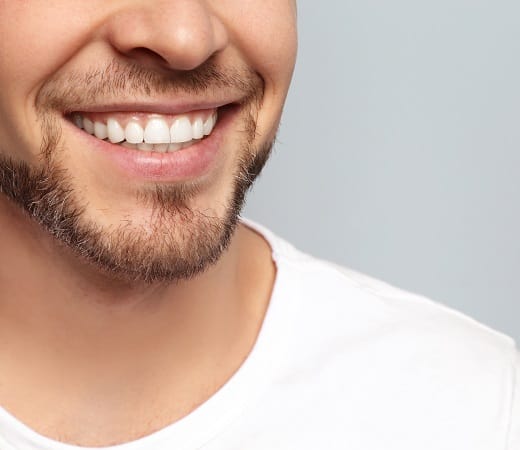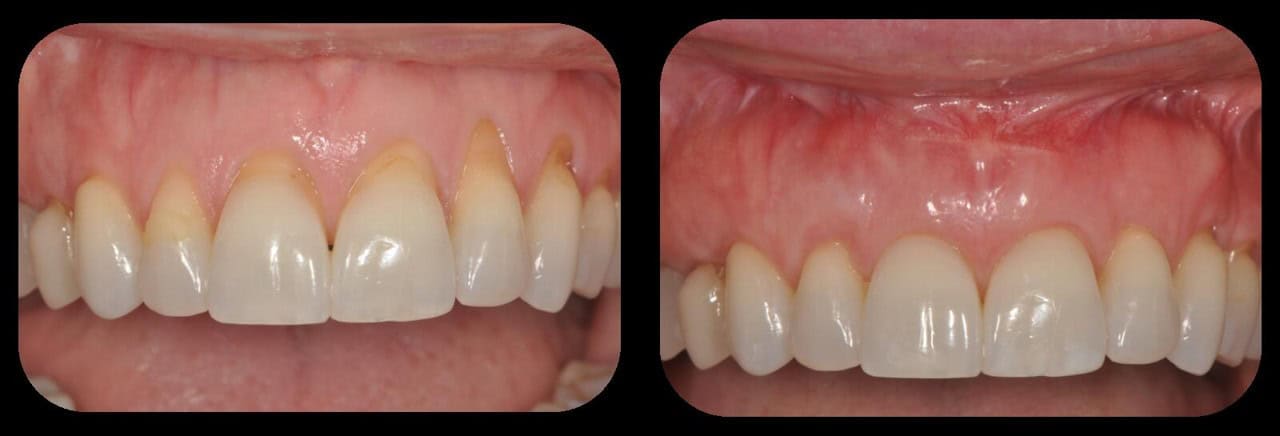
Soft Tissue Grafting – Seattle

We understand that losing a tooth can be a challenging experience, but our team is here to help you restore your smile with dental implants. One of the key aspects of a successful implant placement is the health and stability of the surrounding gum tissue. In some cases, the loss of a tooth can result in a reduction of the gum tissue and underlying bone. In these situations, soft tissue grafting can be a highly beneficial adjunct to the replacement of missing teeth with dental implants.
Soft tissue grafting is a procedure in which healthy gum tissue is taken from another part of the mouth and used to augment and repair the missing or lost tissue in the area of the missing tooth. This not only improves the appearance of the gums, but also provides a stable and healthy environment for the implant to integrate and function properly.
Studies have shown that the longevity and success of dental implants is greatly enhanced with soft tissue grafting. A well-supported implant in a healthy and stable gum environment is more likely to last longer and function better, improving the overall outcome of the replacement tooth.
At our office, we take great pride in providing comprehensive and individualized care for each patient. If you are a candidate for a dental implant, we will thoroughly evaluate your oral health and discuss with you the options for augmenting the gum tissue, including soft tissue grafting, to ensure the best outcome.
We believe in staying current with the latest research and advancements in the field, and our team has the training and expertise to provide state-of-the-art care.
Recovery and Aftercare Instructions
Your recovery from a gum graft typically begins right after the procedure. You’ll receive specific instructions to ensure healing goes smoothly. For the first week, you’ll want to stick to soft foods—think smoothies, mashed potatoes, and yogurt—and avoid chewing in the treated area.
Pain is usually minimal and managed with over-the-counter medication or those prescribed by your periodontist. You’ll need to avoid brushing or flossing the treated area until your provider gives the go-ahead. Instead, a special mouth rinse may be recommended to keep the area clean without disrupting healing.
Most patients return to normal activities within a few days, although full healing of the graft may take a few weeks.
Risks and Considerations

As with any surgical procedure, soft tissue grafting carries certain risks. These may include bleeding, infection, or discomfort at the donor or graft site. However, when performed by an experienced periodontist, complications are rare and typically manageable.
It’s also important to consider your oral hygiene habits and any underlying periodontal disease. Without good dental care and regular checkups, gum recession could return—even after a successful graft.
FAQs
What causes gum recession in the first place?
Gum recession can result from aggressive brushing, gum disease, smoking, genetic predisposition, or even misaligned teeth. Identifying the cause helps in preventing future recession.
Is soft tissue grafting painful?
You may experience mild discomfort after the procedure, but the process itself is performed under local anesthesia, keeping you comfortable. Pain is generally well-managed with medication.
How long does a gum graft procedure take?
The procedure usually takes about one to two hours, depending on the extent of the grafting and whether tissue is harvested from your palate.
Can I eat normally after a gum graft?
You’ll need to follow a soft food diet for at least a week. Avoid hard, crunchy, or hot foods that could disturb the graft or cause irritation.
How soon will I see results from a gum graft?
Initial healing is noticeable within the first few weeks, but complete integration of the graft and final results may take a few months.
How much gum tissue is needed for a graft?
The amount of tissue needed depends on the severity of gum recession and the number of teeth being treated. Your periodontist will determine this during your consultation.
Is a gum graft permanent?
While the results can last many years, long-term success depends on your oral hygiene and regular dental visits. Preventing gum disease and avoiding tobacco use can help preserve your results.
Will dental insurance cover gum graft surgery?
Some dental insurance plans may provide partial coverage for soft tissue grafting if it’s considered medically necessary. It’s best to review your policy or contact your insurance provider for specific information.
Can I get a soft tissue graft if I have existing dental implants?
Yes, soft tissue grafting can be performed around dental implants to improve aesthetics and gum stability, but individual cases vary.
How do I know if I need a gum graft or another type of periodontal treatment?
If you notice gum recession, sensitivity, or changes in your gumline, a consultation with a periodontist is essential. They can determine whether a graft or another procedure best suits your needs.
Scientific References:
- Buser D, Dula K, Belser UC, Hämmerle CH, Hurzeler MB. 10-year survival and success rates of implants placed in healed and immediately placed and restored ridge augmentations. Clin Oral Implants Res. 2009 Dec;20 Suppl 4:98-113.
- Koo H, Roh JD, Kim MK. Soft tissue augmentation in implant therapy: a systematic review. Implant Dent. 2015 Oct;24(5):561-9.
- Mazor Z, Sammara E, Fux D, Chaushu G. Soft-tissue augmentation procedures for dental implants. Compend Contin Educ Dent. 2010 Apr;31(4 Suppl):2-9.
We look forward to helping you achieve a healthy, beautiful smile!



